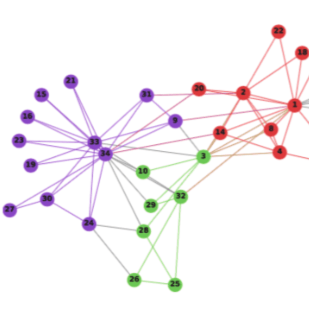A hypergraph is a generalization of a graph that arises naturally when attribute-sharing among entities is considered. Although a hypergraph can be converted into a graph by expanding its hyperedges into fully connected subgraphs, going the reverse way is computationally complex and NP-complete. We therefore hypothesize that a hypergraph contains more information than a graph. In addition, it is more convenient to manipulate a hypergraph directly, rather than expand it into a graph. An open problem in hypergraphs is how to accurately and efficiently calculate their node distances. Estimating node distances enables us to find a node's nearest neighbors, and perform label propagation on hypergraphs using a K-nearest neighbors (KNN) approach. In this paper, we propose a novel approach based on random walks to achieve label propagation on hypergraphs. We estimate node distances as the expected hitting times of random walks. We note that simple random walks (SRW) cannot accurately describe highly complex real-world hypergraphs, which motivates us to introduce frustrated random walks (FRW) to better describe them. We further benchmark our method against DeepWalk, and show that while the latter can achieve comparable results, FRW has a distinct computational advantage in cases where the number of targets is fairly small. For such cases, we show that FRW runs in significantly shorter time than DeepWalk. Finally, we analyze the time complexity of our method, and show that for large and sparse hypergraphs, the complexity is approximately linear, rendering it superior to the DeepWalk alternative.
翻译:暂无翻译




